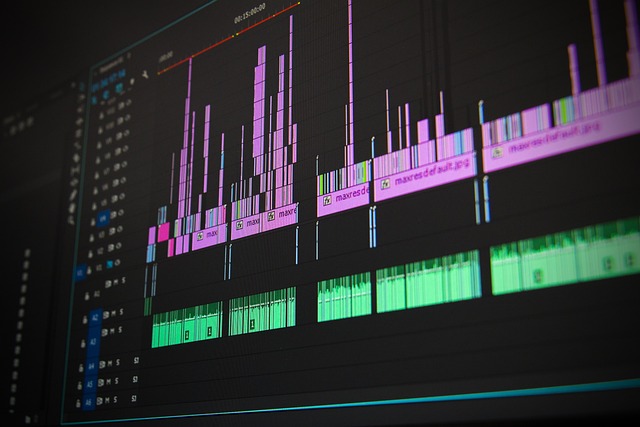Video compression, especially through DivX, is about achieving the best compression ratio between file size reduction and maintaining visual quality. DivX excels at spatial and temporal compression techniques, making it popular for streaming and transferring videos across various devices with universal compatibility. The optimal ratio involves balancing codec settings, bit rates, and source material characteristics; higher bit rates enhance quality but increase size, while lower rates reduce size at the cost of detail. Testing different ratios ensures high-quality playback on diverse devices, benefiting users globally with faster downloads, smoother streaming, and enjoyable media experiences.
Experience seamless, high-quality video playback on any device with the right compression settings. This comprehensive guide explores the ins and outs of DivX compression, empowering users to unlock optimal visual experiences. We demystify video compression fundamentals, delve into the popularity of DivX, and uncover factors influencing output quality. Learn the art of determining the best compression ratio for DivX while reaping its numerous advantages. Discover practical tips for achieving consistent high-quality video playback across diverse platforms.
Understanding Video Compression: The Basics Explained

Video compression is a process that reduces the size of video files while preserving their quality as much as possible. It’s crucial to understand this concept to appreciate how different codecs, like DivX, achieve high-quality playback on various devices. The key lies in balancing two factors: file size and visual fidelity.
The Best Compression Ratio for DivX, or any codec, is achieved through intelligent algorithms that minimize data redundancy. These algorithms analyze the video content, removing unnecessary details that are less perceptible to the human eye. For instance, DivX leverages advanced techniques like spatial and temporal compression. Spatial compression focuses on reducing the amount of data used to describe an image by grouping similar colors or pixels together. Temporal compression, on the other hand, exploits the fact that many video frames share common elements, compressing these repeating patterns effectively. This dual approach ensures that videos maintain their sharpness and clarity while significantly decreasing file sizes, making them suitable for streaming or storage across diverse devices.
What is DivX and Why is it Popular?

DivX is a video compression technology known for delivering high-quality video playback while maintaining small file sizes, making it a popular choice among users looking to enjoy videos on various devices. Its popularity stems from its ability to offer an excellent balance between video quality and file size, which is crucial when streaming or transferring videos. The DivX format has evolved over the years, consistently providing the best compression ratio for video files without sacrificing visual fidelity.
This technology has gained widespread adoption due to its versatility. It supports a wide range of devices, from smartphones and tablets to smart TVs and gaming consoles, ensuring users can access and play their favorite videos seamlessly across different platforms. With DivX, viewers can enjoy crisp, clear pictures and immersive audio without the hassle of large file sizes, making it an ideal solution for both personal and professional video sharing.
Factors Affecting Video Quality During Compression

Video quality during compression is influenced by several factors, including codec selection and its settings, bit rate allocation, and source material characteristics. When it comes to DivX, achieving the best compression ratio involves balancing these elements. The codec’s efficiency in compressing video data without significant loss plays a crucial role. Higher bit rates allow for better quality but increase file size, while lower rates reduce file size but may result in noticeable artifacts or reduced detail.
The Best Compression Ratio for DivX is often found through empirical testing and depends on the specific content. Factors like scene complexity, color depth, and motion can impact compression outcomes. Optimizing settings for these factors ensures the video maintains its quality while achieving a suitable file size for seamless playback on various devices.
Determining the Optimal Compression Ratio for DivX

When optimizing video quality with DivX, finding the ideal compression ratio is key. The best compression ratio for DivX strikes a balance between file size and visual fidelity, ensuring high-quality playback without sacrificing storage space. A higher compression ratio results in smaller file sizes but may introduce artifacts or reduce picture clarity, while a lower ratio preserves detail at the cost of larger files.
To determine the optimal ratio, consider your target devices and their capabilities. Modern hardware often supports higher compression levels without significant quality loss. Testing on various devices and player software can help identify the best-case scenario for each setup, allowing you to select or even automate a compression ratio that delivers consistent high-quality playback across the board.
Benefits of Using the Best Compression Ratio for DivX

Using the best compression ratio for DivX offers numerous benefits, significantly enhancing video playback experiences across various devices. One of the key advantages is the ability to maintain high-quality video while significantly reducing file sizes. This is crucial for users who want to enjoy crisp, clear visuals on their mobile phones, tablets, or older devices with limited storage capacity. Smaller file sizes mean faster downloads and smoother streaming, ensuring viewers can access content without lengthy waiting times.
Moreover, optimal compression ratios allow for more efficient data transmission over different network types, from fast fiber-optic connections to slower cellular networks. This flexibility ensures video content is accessible to a broader audience regardless of their internet infrastructure. As a result, content creators and distributors can reach a wider global audience, providing everyone with an enjoyable and seamless media experience.
Practical Tips for Achieving High-Quality Video Playback

To ensure high-quality video playback across various devices, several practical tips can significantly enhance your experience. One key aspect is choosing the right compression format and settings. For DivX videos, aiming for a Best Compression Ratio ensures optimal file size reduction while preserving excellent visual quality. This balance is crucial for seamless streaming on both high-end and lower-spec devices.
Additionally, pay close attention to bitrate settings. A higher bitrate generally results in better video quality but larger file sizes. Finding the right bitrate for your target audience and device capabilities is essential. Testing different options and considering factors like network speed and screen resolution can help you determine the ideal settings, ultimately delivering a satisfying high-quality video playback experience.
By understanding video compression fundamentals, leveraging popular formats like DivX, and optimizing the Best Compression Ratio for DivX, you can ensure high-quality video playback across various devices. Balancing compression ratio with file size is key; choosing the optimal setting allows for flawless visual experiences without sacrificing storage efficiency. Implement practical tips to achieve consistently excellent results.
